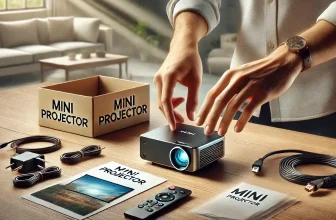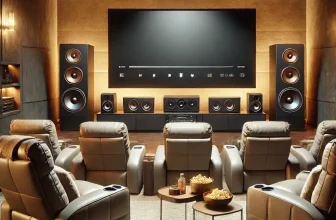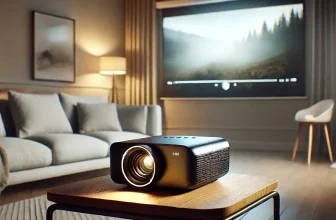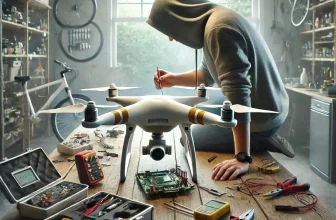Each product is chosen independently by our editors. Purchases made through our links might earn us a commission at no extra cost to you!
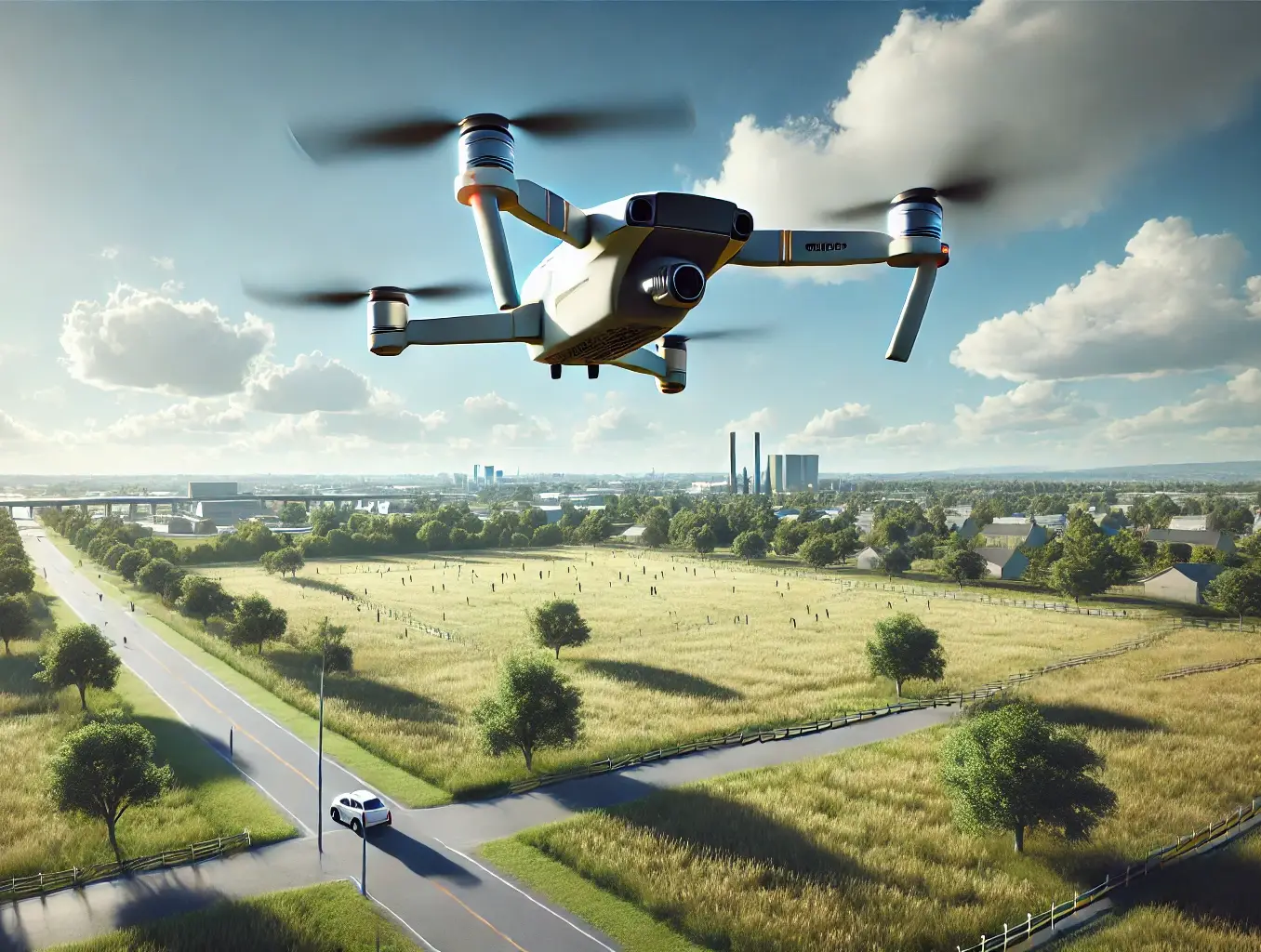
Introduction
This article is designed to provide essential safety tips for beginners who are new to drone flying. Our goal is to help you operate drones safely, avoiding accidents, and enhancing your flying experience.
This article is for individuals who are new to drone flying, whether they are using drones for personal hobbies or starting to explore the potential applications of drones in work-related fields.
Table of Contents
Overview of Drone Safety
Drones are powerful tools used across various industries, including photography, surveying, and even delivery. However, flying a drone safely is crucial to prevent accidents and ensure that both you and those around you are protected. By adhering to basic drone safety tips, you can minimize the risk of accidents, legal violations, and potential damage to the drone or surrounding property.
To dive deeper into How to Ensure Drone Safety, check out our full guide on pre-flight checks and essential safety measures.
List of Safety Tips
1. Perform a Pre-Flight Check
Performing a thorough pre-flight check is crucial to ensure that your drone is in top condition and ready for a safe flight. This simple but essential process can help prevent accidents, extend the life of your drone, and ensure smooth operations during flight.
What to Check Before Every Flight:
Battery Level
- Why it’s important:
A low battery is one of the most common causes of drone accidents. Always make sure the drone’s battery is fully charged before takeoff. Flying with a low battery can result in a sudden power loss, leading to an uncontrolled landing or crash. - How to check:
Check the battery percentage on the drone’s app or on the controller display, and make sure it has enough charge for your planned flight duration. It’s also a good idea to bring extra batteries for longer flights.
- Why it’s important:
Control System and GPS
- Why it’s important:
A stable connection between the drone and the controller is critical for safe flight. Inadequate GPS signals or loss of control can lead to erratic flight behavior or even cause the drone to fly out of range. - How to check:
Before takeoff, verify that the drone is properly synced with the controller and check the GPS signal strength. If the GPS signal is weak, consider moving to an open area where the signal can be stronger.
- Why it’s important:
Propellers and Motors
- Why it’s important:
The propellers and motors are responsible for the drone’s stability and maneuverability. Any damage to these parts can result in a crash. - How to check:
Inspect the propellers for any cracks, chips, or signs of wear. Ensure they are securely attached to the motors and that the motors are functioning properly. If you notice any damage, replace the propellers before flying.
- Why it’s important:
Firmware and Software Updates
- Why it’s important:
Firmware and software updates often include important safety features, bug fixes, and new regulations. Flying with outdated software could lead to unexpected malfunctions. - How to check:
Use the drone’s companion app to check for any available updates. If an update is available, perform the update before flying to ensure your drone is operating with the latest software.
- Why it’s important:
Weather Conditions
- Why it’s important:
Adverse weather conditions such as high winds, rain, or low visibility can make flying dangerous. These conditions can affect your drone’s performance and lead to crashes. - How to check:
Before each flight, check the weather forecast. Avoid flying in winds stronger than the drone’s specified limit (usually between 20-30 mph for most drones) and avoid flying in rain or fog. Consider using apps like UAV Forecast to get real-time weather data and wind speed.
- Why it’s important:
Additional Pre-Flight Checks
Calibration:
Make sure to calibrate your drone’s compass and IMU (Inertial Measurement Unit) if necessary. This helps the drone fly in the correct direction and helps the GPS system work accurately.Check the Environment:
Before takeoff, ensure that the area is free from obstacles like trees, power lines, or buildings. Flying in an open, obstacle-free area is safer and helps prevent crashes.
Why This Step is Crucial
Performing a pre-flight check ensures that your drone is ready for flight and helps prevent accidents caused by technical failures or environmental factors. A few minutes of preparation can save you time, money, and stress, and make sure your flight is as safe as possible.
For more detailed instructions on how to perform a full pre-flight check, refer to our Complete Drone Pre-Flight Checklist.
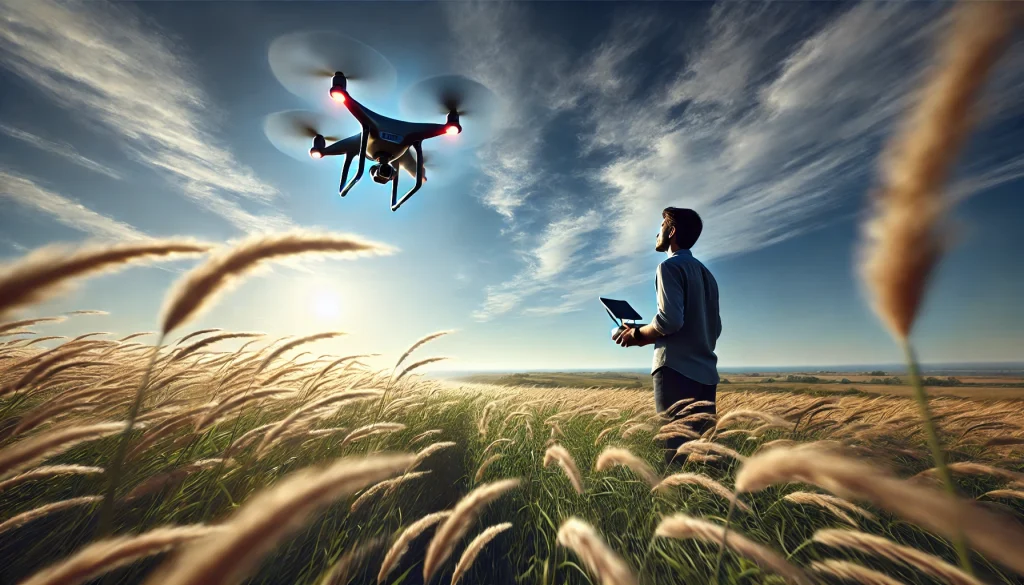
2. Keep Your Drone Within Line of Sight
One of the most important safety rules when flying a drone is to always keep it within your line of sight. This ensures that you maintain control of the drone at all times, preventing accidents and making it easier to react to any potential issues during flight.
Why Line of Sight Is Important
- Control and Awareness:
By keeping the drone in your line of sight, you can instantly detect any changes in its flight behavior, such as drift or loss of signal. If something goes wrong, you’ll be able to quickly take corrective action. - Avoid Collisions:
Flying within line of sight helps you avoid obstacles such as trees, power lines, or other aircraft. Without clear visual contact, it becomes much harder to navigate safely. - Legal Compliance:
Many drone regulations (such as those set by the FAA) require that drones be flown within the operator’s visual line of sight, particularly for recreational and non-commercial flights. Flying beyond this limit could result in fines or penalties.
How to Keep Your Drone Within Line of Sight:
- Stay Close and Avoid Distance Limits
- Don’t fly your drone too far away from you. Keep it within a distance where you can clearly see it and maintain control. While modern drones often have long-range capabilities, staying within a comfortable distance reduces risks.
- Use the Drone’s Built-In Features
- Many drones come with Return-to-Home (RTH) features that automatically bring the drone back to its launch point if it loses connection or if the battery is low. Activating RTH can prevent losing control when flying further distances.
- Fly in Open Areas
- Choose open spaces with minimal obstacles. Flying in areas like parks, fields, or beaches allows for a clear line of sight and reduces the chances of hitting objects like trees or buildings.
- Avoid Flying Over Crowds
- It’s important to avoid flying over people, as not only does this pose a safety risk, but it also violates drone flying regulations. Always maintain visibility of your drone and make sure it’s safely away from any crowd or populated areas.
Learn how to make sure your drone stays within a safe range with our Best Practices for Drone Range Management.
3. Avoid Flying Near People and Crowds
Flying your drone near people or in crowded areas poses significant risks to both the operator and others around them. In addition to safety concerns, it can also result in legal issues, as flying over people or crowds often violates drone regulations.
Why You Should Avoid Flying Near People and Crowds:
- Safety Risks:
Drones, especially larger models, can be dangerous if they malfunction or lose control. Even smaller drones can cause injury if they collide with people or fall from the sky. Keeping a safe distance from crowds reduces the likelihood of accidents. - Legal Requirements:
Many countries, including the U.S., have laws that prohibit flying over people unless you have special permission. For example, the FAA’s Part 107 regulations restrict drone flight over people unless specific conditions are met. Violating these laws can lead to heavy fines or even the suspension of your drone flying privileges. - Privacy Concerns:
Flying near people or in crowded spaces can also raise privacy issues. Drones equipped with cameras can inadvertently capture footage of private individuals, which may violate privacy rights and lead to legal consequences.
How to Avoid Flying Near People and Crowds:
- Stay Clear of Public Events
- Avoid flying over public events, such as concerts, festivals, or sporting events. These are often held in crowded areas, which are not only risky but may also require special permissions to fly legally.
- Choose Remote Locations for Flights
- Opt for quieter, less populated areas like open fields, parks, or rural locations. These areas allow for safe and enjoyable flying without putting others at risk.
- Check for Temporary Flight Restrictions (TFRs)
- Always check if there are any temporary flight restrictions (TFRs) in place in your area before flying. TFRs are typically issued during events like parades or emergencies and can restrict drone operations in certain zones.
- Use Geofencing and Safe Zones
- Many drones come equipped with geofencing capabilities that can automatically prevent your drone from entering certain restricted zones. Enable geofencing to ensure you stay clear of sensitive areas where people may gather.
If you want to learn more about where you can safely fly your drone, check out our Drone No-Fly Zones Guide.
- Many drones come equipped with geofencing capabilities that can automatically prevent your drone from entering certain restricted zones. Enable geofencing to ensure you stay clear of sensitive areas where people may gather.
4. Use Geofencing
Geofencing is a powerful feature that allows drones to automatically avoid certain restricted or no-fly zones, enhancing both safety and legal compliance. By using geofencing, you can ensure that your drone does not enter areas where flight is prohibited, preventing potential accidents or legal issues.
Why Geofencing Is Important:
- Safety Assurance:
Geofencing helps prevent drones from flying into dangerous areas such as airports, power lines, or densely populated zones. This automatic restriction keeps both the drone and people safe. - Legal Compliance:
Many regions have strict regulations about where drones can fly. Geofencing helps ensure that you don’t accidentally violate these regulations by flying into restricted zones. This feature is especially useful when flying in unfamiliar areas. - Avoiding No-Fly Zones:
Drones equipped with geofencing can automatically prevent entry into no-fly zones, like government buildings, military facilities, or certain urban areas. By using geofencing, you won’t need to worry about manually navigating around these areas.
How to Use Geofencing:
- Enable Geofencing in Your Drone’s Settings
- Most modern drones, especially from manufacturers like DJI, come with built-in geofencing capabilities. In the drone’s app, ensure that the geofencing feature is activated before you take off.
- Familiarize Yourself with Local No-Fly Zones
- While geofencing works automatically, it’s still a good idea to use flight planning tools like AirMap or B4UFLY to identify no-fly zones in your area before you fly. These tools can help you be aware of temporary restrictions, like those near public events.
- Set Geofencing Parameters
- Many drones allow you to set your own geofencing limits in terms of altitude and distance. For example, you can restrict the drone to fly no higher than 400 feet, or prevent it from flying too far from its launch point.
- Monitor the Geofencing Alerts
- When you fly, keep an eye on your drone’s app for alerts or notifications if it approaches a restricted zone. The app will typically notify you when the drone is about to enter a prohibited area and may even automatically prevent flight in that direction.
To learn more about no-fly zones and how geofencing can help you avoid them, check out our Complete Guide to No-Fly Zones.
- When you fly, keep an eye on your drone’s app for alerts or notifications if it approaches a restricted zone. The app will typically notify you when the drone is about to enter a prohibited area and may even automatically prevent flight in that direction.
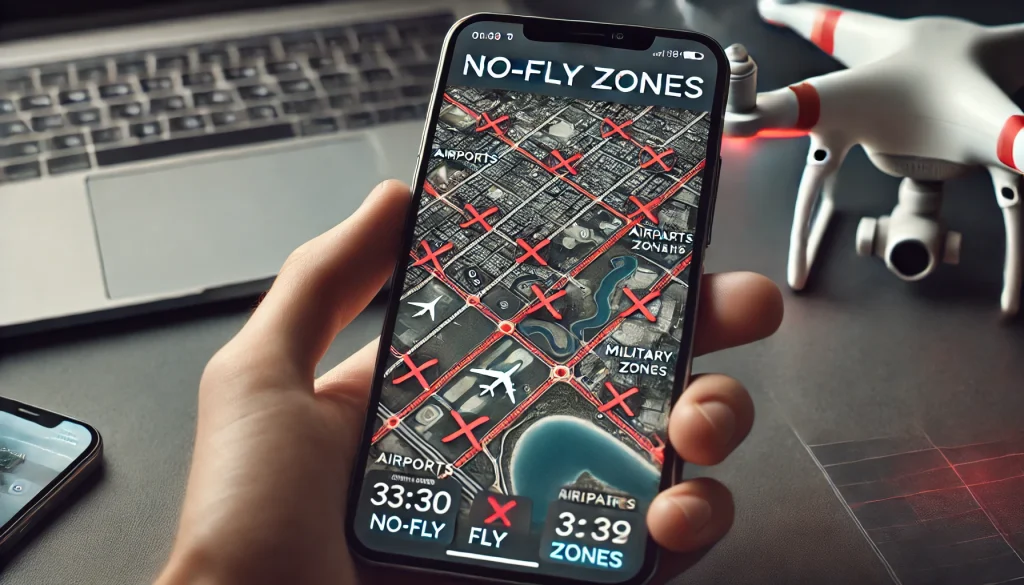
5. Conduct Post-Flight Inspection
After every drone flight, conducting a post-flight inspection is essential to ensure your drone remains in good condition and ready for the next use. Regular inspections help you identify any issues that may have arisen during the flight and address them before they become bigger problems.
Why a Post-Flight Inspection is Important:
- Ensure Drone Integrity:
The inspection helps you catch any potential damage to your drone that might not be immediately visible. Checking the drone after each flight can prevent future malfunctions or crashes. - Prevent Safety Issues:
Small issues, like loose propellers or damaged motors, can escalate if not addressed promptly. Post-flight checks ensure that everything is intact and operating correctly, preventing accidents on your next flight. - Extend the Drone’s Lifespan:
Regular maintenance and inspection can significantly extend the lifespan of your drone, saving you money on repairs or replacements.
What to Check After Every Flight:
- Propellers:
- Why it’s important: Propellers are among the most vulnerable parts of your drone. They can easily get damaged during flight, especially if you fly near obstacles or in windy conditions.
- How to check: Inspect the propellers for cracks, chips, or signs of wear. Make sure they are securely fastened to the motors. If you notice any damage, replace the propellers before the next flight.
- Motors and Gimbals:
- Why it’s important: The motors are responsible for the drone’s propulsion, while gimbals stabilize the camera. Any issues here can affect flight stability and image quality.
- How to check: Check the motors for any unusual sounds, heat, or resistance. Spin each motor by hand to ensure they move smoothly. If you’re using a camera, check the gimbal for smooth operation and any visible damage.
- Battery and Charging Ports:
- Why it’s important: Batteries are essential for flight, and improper charging can reduce their lifespan. Damaged charging ports or worn-out batteries can lead to unexpected power loss during flight.
- How to check: Inspect the battery for any signs of swelling, corrosion, or damage. Clean the charging ports regularly and ensure they’re free from dust and debris. Store the battery in a safe and cool place after every flight.
- Firmware and Software Updates:
- Why it’s important: Firmware updates often include fixes and performance improvements. Keeping your drone’s firmware up-to-date ensures you have the latest safety features and optimal performance.
- How to check: After each flight, check your drone’s app for available firmware updates. If an update is available, perform it to ensure your drone is always running the latest version.
- Drone Frame and Body:
- Why it’s important: A damaged frame or body can significantly affect the stability of your drone. It’s important to check for any cracks, dents, or scratches that might have occurred during the flight.
- How to check: Inspect the drone’s frame, arms, and body for any visible damage. Tighten any loose screws or parts that may have come undone during the flight.
Learn more about Drone Maintenance Tips to keep your drone in top condition.
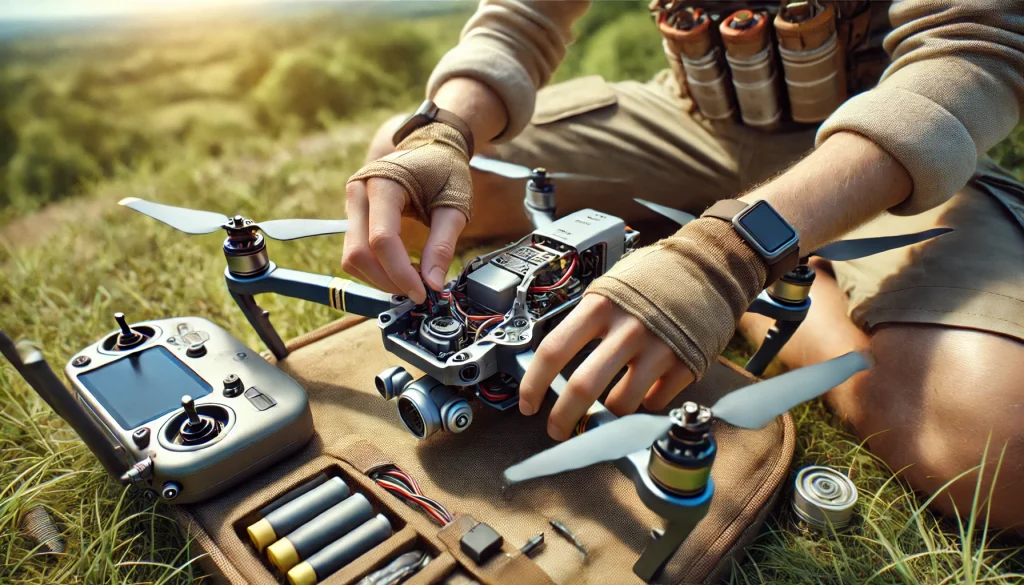
Creative DIY Tips
1. Repurpose Your Drone for Other Uses
Drones are versatile tools that can serve more than just one purpose. While they are primarily used for aerial photography or flying fun, there are many creative ways to repurpose your drone for other uses. Whether you’re looking to enhance your drone’s capabilities or simply explore new ways of using it, these tips can help you get more out of your investment.
Why Repurposing Your Drone is Beneficial:
- Maximize Your Investment:
Instead of just using your drone for one purpose, repurposing it allows you to get more value and functionality, making it more than just a recreational gadget. - Expand Your Creative Horizons:
By modifying or adding accessories to your drone, you can explore new creative possibilities, such as capturing unique angles or shooting high-quality footage from unconventional perspectives. - Custom Applications:
Repurposing your drone for practical uses like surveying, inspecting rooftops, or delivering lightweight packages can help you optimize its utility, especially in commercial settings.
Creative Ways to Repurpose Your Drone:
- Aerial Photography and Videography
- Idea: Add a high-quality camera or gimbal to your drone to capture smooth, professional-grade aerial photos and videos. This is perfect for filmmakers, content creators, or real estate photographers looking to capture stunning aerial shots.
- Tip: Experiment with different camera angles and settings to achieve cinematic results. You can even add a DSLR camera or action camera for higher-quality footage.
- Drone Racing
- Idea: If you’re looking for more excitement, you can repurpose your drone for racing. Many drones are designed specifically for drone racing, but with the right modifications, you can convert an existing drone for this fast-paced hobby.
- Tip: Upgrade the motors, install a racing FPV (First-Person View) system, and choose a lightweight frame to optimize your drone for speed and agility.
- Drone for Surveying or Mapping
- Idea: Drones equipped with GPS and camera systems can be used for surveying land or creating 3D maps for various industries, including agriculture, construction, and real estate.
- Tip: Attach a camera with mapping software and use your drone to collect aerial data, monitor crop health, or survey large areas quickly and efficiently.
- Search and Rescue Operations
- Idea: In some cases, drones can be repurposed for search and rescue operations. By adding thermal imaging cameras or other sensor equipment, drones can be used to locate missing persons or assess disaster areas.
- Tip: Install a thermal or infrared camera to help in search and rescue missions, especially in low-visibility environments such as forests or during nighttime operations.
- Drone Delivery System
- Idea: With the rise of drone delivery services, you can modify your drone to carry small packages or parcels to nearby locations. This is particularly useful for local deliveries or transporting lightweight items.
- Tip: Ensure your drone can carry the weight of the items securely. Use a custom mount or attach a lightweight basket for holding packages.
Explore more about Customizing Your Drone for Professional Use to enhance its functionality and performance.
2. Customize Flight Settings
Customizing the flight settings on your drone can significantly improve your flying experience and help you adapt to different environments and needs. Whether you’re a beginner or an experienced pilot, adjusting flight settings can enhance control, increase stability, and unlock new features on your drone.
Why Customizing Flight Settings is Important:
- Tailor Flight to Your Skill Level:
Custom settings allow you to adjust the drone’s responsiveness, speed, and stability, making it easier to fly in different conditions and for various tasks. If you’re a beginner, you can set the drone for more stable and less aggressive movements, while experienced pilots can push the limits for more challenging flights. - Improve Stability in Challenging Conditions:
By adjusting parameters like the yaw, pitch, and roll, you can stabilize the drone in windy conditions or during aggressive maneuvers, ensuring a smoother flight experience and reducing the risk of accidents. - Unlock Additional Features:
Many drones come with advanced settings that unlock additional features, like custom flight paths, speed limits, or automated maneuvers. Customizing these features can add a creative touch to your flying and filming.
Key Flight Settings to Customize:
- Adjusting Speed and Sensitivity
- Idea: Depending on your skill level, you can adjust the maximum speed of your drone. Beginners may prefer slower speeds for smoother flights, while experienced pilots might prefer faster settings for more dynamic maneuvers.
- How to adjust:
In the drone’s settings, look for options to limit the maximum speed. Some drones allow you to set different speed limits for various flight modes (e.g., slow for beginners, fast for expert mode).
- Setting Maximum Altitude
- Idea: You can customize the maximum altitude your drone is allowed to reach. Limiting altitude helps prevent the drone from flying too high and losing control.
- How to adjust:
Go to the flight settings menu and set a maximum altitude limit. This is especially useful in areas with restricted airspace, as it helps ensure you stay within legal flight boundaries.
- Adjusting Stabilization and Gimbal Control
- Idea: Gimbal control settings can be customized to make the camera more stable and provide smoother footage, even in windy conditions.
- How to adjust:
Some drones offer a gimbal control feature that allows you to adjust how much the gimbal compensates for movements. Fine-tuning these settings can make your footage smoother when flying in turbulent conditions.
- Customizing Flight Mode
- Idea: Many drones come with multiple flight modes, such as “Sport Mode,” “GPS Mode,” or “Beginner Mode.” Customize these modes to suit your needs.
- How to adjust:
You can switch between flight modes depending on your environment. Beginner Mode typically has limited speed and range, while Sport Mode provides more agility and responsiveness for advanced maneuvers.
- Creating Custom Flight Paths
- Idea: Some drones allow you to create custom flight paths for automatic flight. This feature is particularly useful for aerial photography or surveying large areas.
- How to adjust:
Using the drone’s companion app, you can map out a specific flight path and have the drone follow it autonomously, freeing you up to focus on other aspects like camera angles.For more advanced customization tips, check out our Guide to Drone Flight Modesfor expert pilots.
3. Avoid Flying in Restricted Areas
Flying in restricted areas can result in serious legal consequences, not to mention potential safety hazards. It’s essential to understand where these areas are and to avoid flying in them at all costs. Violating no-fly zones could lead to fines, the confiscation of your drone, or worse, interference with crewed aircraft.
Why You Should Avoid Flying in Restricted Areas:
- Legal Consequences:
Many countries have strict rules regarding where drones can be flown. Restricted areas, such as airports, military zones, or government buildings, are off-limits for drone operators. Ignoring these restrictions can result in heavy fines, confiscation of your drone, and even criminal charges. - Safety Risks:
Flying near airports, for example, could result in your drone interfering with crewed aircraft, posing a serious risk to aviation safety. Similarly, flying near restricted government or military sites may compromise national security, with severe consequences. - Respect for Privacy and Property:
Some areas, such as private properties or residential neighborhoods, may have rules that prohibit drone flights. Even if these areas are not strictly “no-fly zones,” it’s always important to respect people’s privacy and avoid flying too close to others.
To learn more about how geofencing and no-fly zones work, check out our Complete Guide to No-Fly Zones.
How to Avoid Flying in Restricted Areas:
- Check for No-Fly Zones Using Apps
- Tip: Use tools like B4UFLY or AirMap to check real-time airspace restrictions. These apps provide live maps and data on restricted areas and temporary flight restrictions (TFRs).
- How to use: Before each flight, check the area where you plan to fly to ensure that there are no temporary or permanent no-fly zones in your path.
- Pay Attention to Geofencing Alerts
- Tip: Many modern drones come with built-in geofencing that prevents them from entering restricted areas. Always ensure that geofencing is activated before takeoff to avoid flying into prohibited zones.
- How to use: Make sure the drone’s app or controller alerts you if you approach a restricted zone. This automatic feature will stop your drone from flying into areas it shouldn’t.
- Review Local Regulations
- Tip: Before flying in a new area, research the local regulations and no-fly zones. Some countries or regions may have specific rules that vary by location, especially near airports, sports arenas, or other sensitive areas.
- How to do it: Use local government websites or drone-specific apps to stay updated on rules for drone operations in specific regions.
- Stay Informed About Temporary Flight Restrictions (TFRs)
- Tip: TFRs are temporary airspace restrictions that may occur during special events, emergencies, or military exercises. Be sure to check if TFRs are in place before flying in a particular area.
- How to do it: Use flight planning apps that track TFRs and alert you when there are temporary no-fly zones in your area.
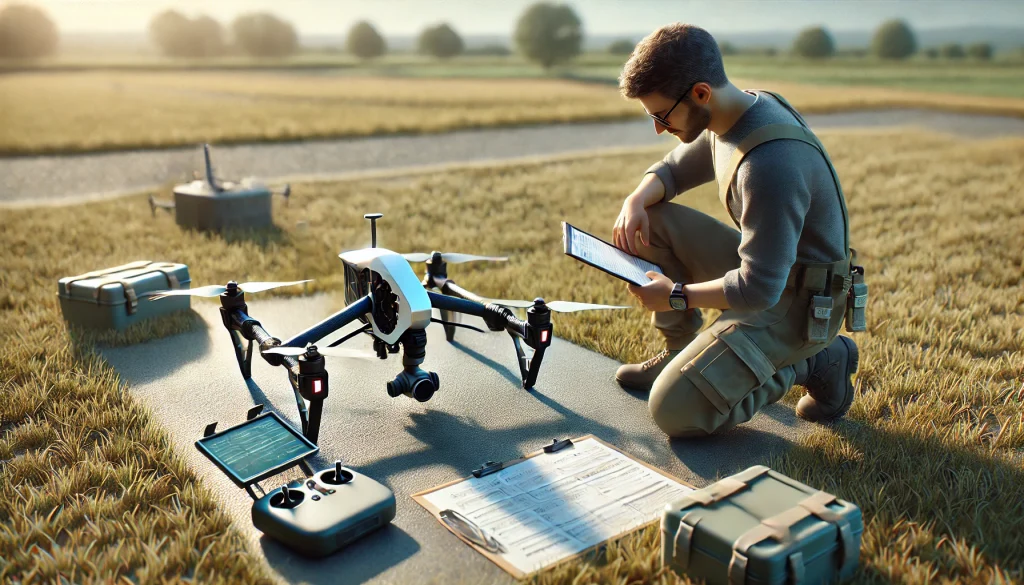
4. Safety Comes First
When flying a drone, safety should always be your top priority. Regardless of how experienced you are, accidents can happen, and being proactive in your safety measures will help avoid them. By focusing on safety, you not only protect yourself but also others around you and your drone.
Why Safety Should Always Come First:
- Accidents Can Happen Anytime:
Even experienced drone pilots can face unexpected issues such as signal loss, battery failure, or environmental factors. Prioritizing safety helps mitigate these risks and gives you the best chance of handling emergencies effectively. - Protecting People and Property:
Drones can cause harm if they collide with people, property, or other aircraft. Ensuring you fly safely will help protect not only your own safety but also the safety of those around you. - Maintaining Legal Compliance:
Many safety protocols, like staying within line of sight, flying at a safe altitude, and avoiding restricted areas, are also legal requirements. Prioritizing safety ensures you remain within legal limits and avoid fines or penalties.
Safety Measures to Always Follow:
- Maintain Line of Sight
- Tip: Always keep your drone within your line of sight. If you can’t see it, you might lose control or fly into obstacles. Maintaining visual contact is one of the most important safety rules.
- How to do it: Never fly your drone beyond the distance where you can visually track it, even if it has GPS or other navigation features.
- Fly at Safe Altitudes
- Tip: Keep your drone below the legal flying height (usually around 400 feet) to avoid interfering with crewed aircraft.
- How to do it: Use your drone’s settings to limit the maximum altitude, and make sure you’re aware of local airspace restrictions.
- Pre-Flight Safety Check
- Tip: Always perform a thorough pre-flight check before taking off. This includes inspecting the battery, propellers, and control systems, and ensuring you have the necessary software updates.
- How to do it: Follow a pre-flight checklist to ensure that your drone is in good working order, and double-check weather conditions before you fly.
- Avoid Flying in Bad Weather
- Tip: Never fly your drone in poor weather conditions, such as strong winds, rain, or fog. These can affect the drone’s stability and cause accidents.
- How to do it: Always check weather forecasts and avoid flying if the wind speed is above the recommended limit for your drone.
- Be Mindful of Battery Levels
- Tip: Always monitor your drone’s battery level and ensure it’s sufficient for the flight. Running out of battery mid-flight can lead to a crash.
- How to do it: Make sure to land your drone before the battery runs too low, and consider bringing spare batteries for longer flights.
Learn more about Drone Safety Tips to ensure you follow all the necessary precautions for safe flying.
5. Regular Drone Inspections
Regular drone inspections are essential to ensure that your drone is always in optimal working condition and safe to fly. By performing routine checks and maintenance, you can extend the lifespan of your drone, prevent accidents, and reduce the likelihood of malfunctions during flight.
Why Regular Drone Inspections Are Important:
- Prevent Malfunctions:
Regular inspections help identify small issues before they become major problems. For example, a loose propeller or worn-out battery can cause a drone to crash mid-flight. By inspecting your drone regularly, you can catch these problems early. - Ensure Safe Operation:
Inspections ensure that all critical components of the drone, such as the motors, sensors, and control systems, are working properly. A malfunctioning sensor or motor could lead to unpredictable flight behavior, endangering the operator and others nearby. - Maintain Drone Performance:
Keeping your drone in top shape with regular inspections ensures that it performs at its best, providing smoother and more reliable flights every time.
What to Check During Regular Drone Inspections:
- Propellers and Motors
- Tip: Inspect the propellers for cracks, chips, or signs of wear. A damaged propeller can affect flight stability and cause accidents.
- How to do it: Check the propellers after every flight, and replace them if you notice any damage. Also, inspect the motors for unusual sounds or resistance.
- Battery and Charging Ports
- Tip: The battery is one of the most critical components of the drone. Regularly inspect the battery for any signs of swelling, corrosion, or damage.
- How to do it: Clean the battery terminals and charging ports regularly to avoid dirt buildup. Check that the battery is securely placed in its compartment and not showing signs of wear.
- Flight Controller and GPS System
- Tip: Ensure that the flight controller and GPS system are working properly. A malfunction in these systems can cause instability and loss of control.
- How to do it: Test the controller before each flight, ensuring that it is synced with the drone. Check that the GPS signal is strong, especially before long flights or flying in unfamiliar areas.
- Firmware and Software Updates
- Tip: Keep your drone’s firmware and software up to date. Many drones receive regular updates that improve safety features, fix bugs, and enhance flight performance.
- How to do it: Check the drone’s app or companion software for any available updates, and perform the updates before flying.
- Frame and Body
- Tip: Inspect the drone’s frame and body for cracks, dents, or damage that could affect its structural integrity.
- How to do it: Carefully check all arms, joints, and the main body for any signs of wear or impact damage. Tighten any loose screws or parts.
Learn more about Drone Maintenance Tips to keep your drone in top condition and avoid unexpected issues during flights.
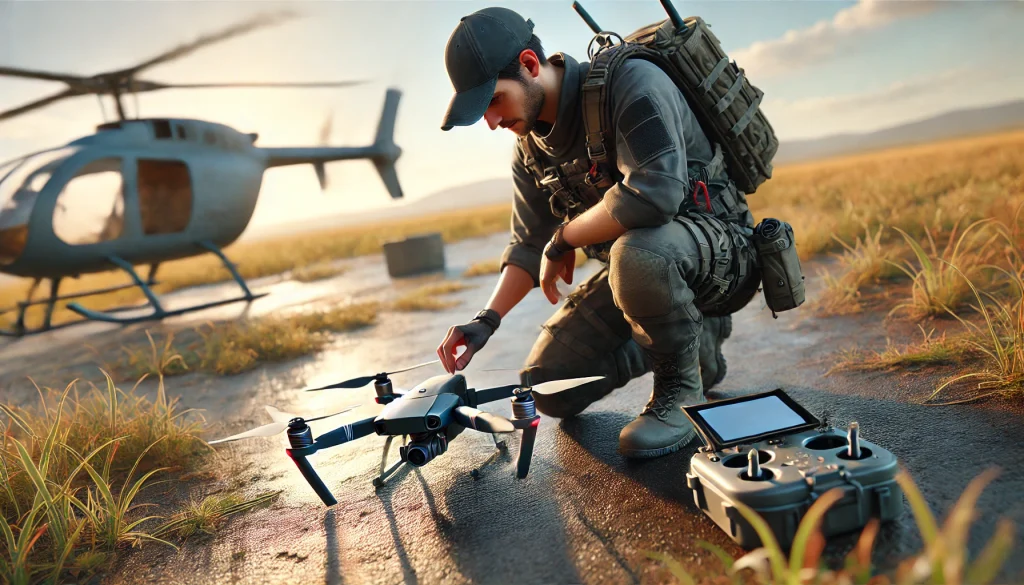
FAQs
1. Do I need to register my drone?
- Answer:
Yes, if your drone weighs over 250g or if you plan to use it for commercial purposes, you must register it with the relevant aviation authorities. In the U.S., for example, the FAA requires drone registration for all drones over 250g. Registration is usually simple and can be done online through the official aviation authority website.
2. How can I make my drone fly safely in strong winds?
- Answer:
Flying in strong winds can be challenging and risky, especially for lightweight drones. To make your drone fly safely in windy conditions:- Check your drone’s maximum wind resistance.
- Adjust the flight settings to reduce the sensitivity of the controls.
- Fly in open spaces, away from obstacles like trees or buildings that can create turbulence.
- Avoid flying in winds stronger than what your drone’s specifications allow. Always check the weather conditions before flying.
3. Can I fly my drone at night?
- Answer:
Yes, but only if your drone is equipped with proper lighting and if you follow the local laws and regulations. Some regions may require special permissions to fly at night. Additionally, make sure you can maintain visibility of your drone and that it has lights that are visible from a distance to avoid collisions.
4. What should I do if my drone flies out of sight or loses connection?
- Answer:
If your drone flies out of sight or loses connection, the first thing you should do is activate the Return-to-Home (RTH) feature if your drone is equipped with it. This feature will automatically bring your drone back to its takeoff point. If your drone doesn’t have RTH, try to regain control by using the remote control, and slowly guide it back to you. Always fly within line of sight to reduce this risk.
5. How often should I perform drone maintenance?
- Answer:
It’s recommended to perform a maintenance check after every flight, especially if the drone was used in challenging conditions such as high winds or after long flights. Regular inspections should include checking the battery, propellers, motors, and firmware. Additionally, perform a more thorough inspection every few weeks, depending on how often you fly.
6. What should I do if my drone crashes?
- Answer:
If your drone crashes, first ensure that no one is injured and that the surrounding area is safe. Then, inspect the drone for visible damage, such as broken propellers, damaged motors, or any issues with the frame. If the drone is still operational, attempt to land it safely. If there are serious issues, consult the manufacturer’s guidelines or take it to a professional repair service.
7. Can I fly my drone over private property?
- Answer:
It’s important to respect people’s privacy when flying your drone. While drones are generally allowed to fly in public airspace, flying over private property without permission can lead to privacy issues or legal disputes. Always ask for permission before flying over private land or buildings to avoid conflicts.
8. How can I improve the camera quality of my drone?
- Answer:
To improve the camera quality of your drone, consider adding a gimbal for better stability, using higher-quality lenses, or adjusting your drone’s camera settings for optimal resolution. Ensure you fly in good weather conditions with sufficient lighting for clear, high-quality footage.
9. Are there any restrictions on flying drones near airports?
- Answer:
Yes, flying drones near airports is strictly prohibited unless you have special permission. Most airspaces near airports are considered no-fly zones to ensure safety for crewed aircraft. Always check for no-fly zones before flying and use apps like AirMap or B4UFLY to verify local restrictions.
Conclusion
In conclusion, flying a drone safely is not just about following the rules—it’s about being a responsible operator. By taking the time to properly inspect your drone, avoid restricted areas, maintain line of sight, and prioritize safety, you can enjoy a smooth and worry-free flying experience.
Key Takeaways:
- Always perform a pre-flight check to ensure your drone is ready for safe operation.
- Keep your drone within line of sight and avoid flying near people and crowds to minimize risks.
- Use geofencing and other safety features to automatically avoid restricted zones.
- Regular drone inspections are essential to ensure the long-term health of your drone and prevent malfunctions during flight.
Final Thought:
Remember, safety should always be your top priority when flying a drone. Whether you’re a beginner or an experienced pilot, the key to a successful flight lies in preparation and attention to detail. By following these safety tips, you ensure not only your safety but also the safety of those around you and your equipment.
Are you ready to take your drone flying experience to the next level? Start by reviewing these safety tips, perform your pre-flight checks, and fly responsibly. Interested in upgrading your drone or accessories? Check out our selection of Top Drones for Beginners and ensure you have the best equipment for a safe flight!


